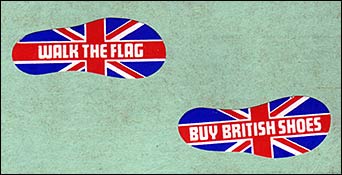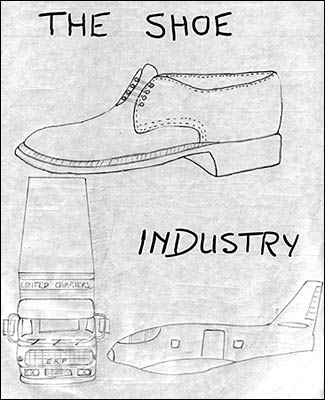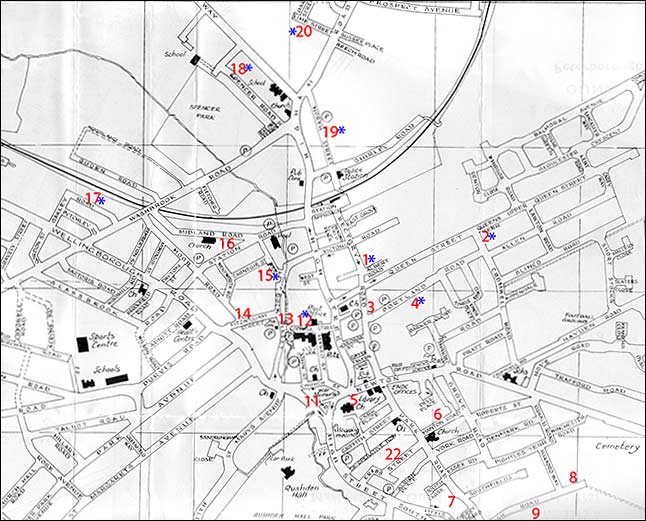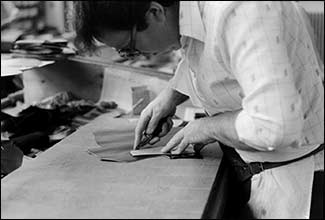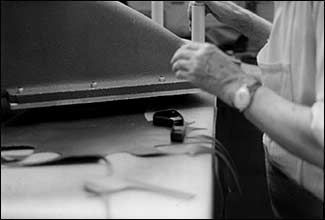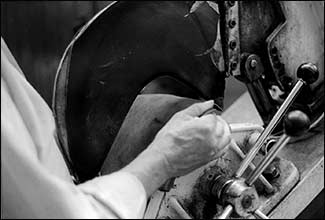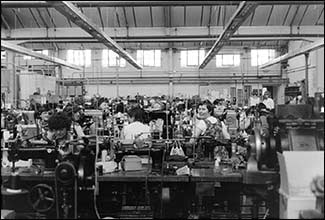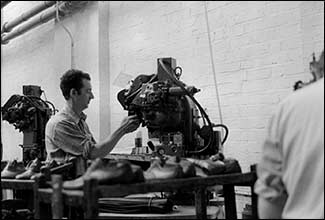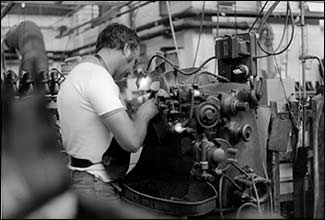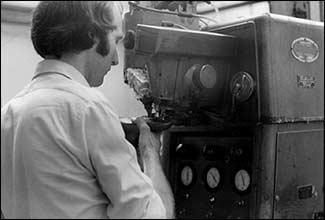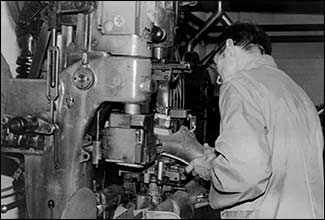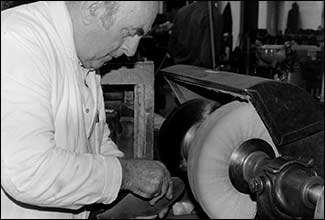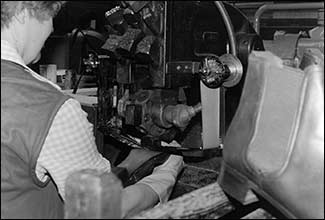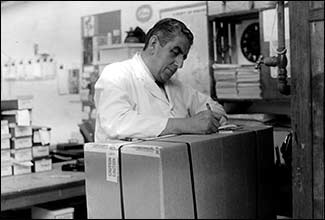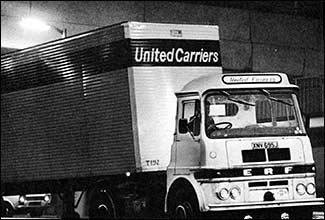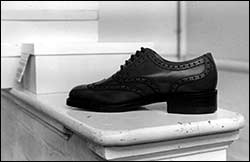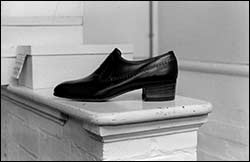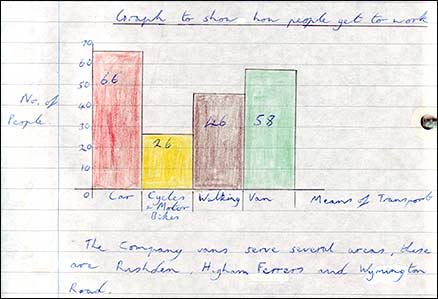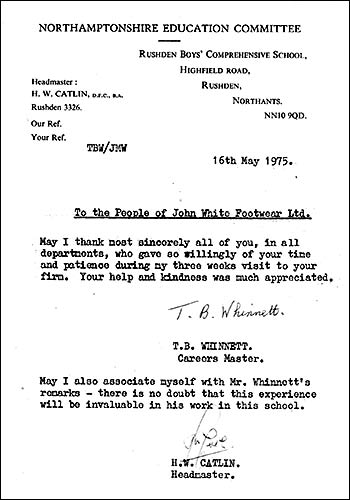|
||||||||||||||||||||||||||||||||||||||||||||||||||||||||||||||||||||||
|
Mark Holloway - 1981
Secondary School Project |
||||||||||||||||||||||||||||||||||||||||||||||||||||||||||||||||||||||
|
|
||||||||||||||||||||||||||||||||||||||||||||||||||||||||||||||||||||||
|
||||||||||||||||||||||||||||||||||||||||||||||||||||||||||||||||||||||
|
||||||||||||||||||||||||||||||||||||||||||||||||||||||||||||||||||||||
Introduction Rushden is a small country town, which is situated on the borders of Northamptonshire and Bedfordshire. The town is situated about sixty-five miles outside London and is on the main A6 road to the capital. Also you can get to the Motorway (M1) quite easily. The nearest Railway Station is Wellingborough because the rail station in the town has been closed down for several years; the Wellingborough line has a service between London and Leicester. The nearest main line stations are at Bedford and Northampton. The main industry of the town is the manufacture of boots and shoes. This industry employs a large number of people but the industry is now becoming very run down. The workers come from Rushden and the surrounding areas of Higham Ferrers, Irthlingborough, Raunds and Stanwick. About 3,400 men were employed in the footwear industry; also it employs women. Around 1973 75% to 85% of the working population were employed. The reason it was so high was that there were only two other industries; now only about 50% to 55% work in the industry. Before World War One most of the workers were related, but after the war immigrants came into the town and then they started to work in the industry. |
||||||||||||||||||||||||||||||||||||||||||||||||||||||||||||||||||||||
Chapter One - How the Shoe Industry Started in Rushden The shoe industry started in Rushden about the early 1890s, with people working on their own in their house for the factories. In those days some people used to earn £5 a week, receiving sixpence a pair for making little riveted shoes. These weren’t stitched shoes in those days and all the work was done outside except for the clickers in the factory. The clickers were the workers who cut the uppers, they were the most skilled men in the trade. There would perhaps be a sole press cutting the soles but all other work would be given out, so the factories paid the outside workers for the completion of the shoes. The first known factory in Rushden was that of Caves which was in College Street; this no longer exists. (Rushden Research has found that this was the third factory of John Cave’s – click here to read more) Several firms had begun in the town by 1900. These included the firm of William Green and Sons whose factory is now situated on the corner of Queen Street and Cromwell Road. From then on, other firms started up in various parts of the town and some in Higham Ferrers. (The factories are marked on the map, and these are the ones which were working in the 1970s) The two main reasons for the shoe industry to start in Rushden were: first there was a Leather Tanning industry already present in the area, and second, there was no other industry in the area except the tanning so there were quite a lot of people without work. The Tanning industry grew because the Nene Valley was rich in its water supply and there was an abundance of oak trees in the area. These were used for colouring the leather. Naturally enough, good quality shoes cannot be made from poor leather and so the leather produced in the area of the Nene Valley can be said to have been good quality. The firms have two qualities of leather, one leather had to be soft and pliable to be used for the upper of the shoe: this is the part of the shoe that goes over the foot. The other type of leather had to be hard and durable to be used for the sole of the shoe. Both of these types of leather could be found in the Nene Valley, thus enabling the shoe industry to grow in the area without leather having to be brought into the area from other tanneries. It can be seen from the map of Rushden and Higham Ferrers, the factories seemed to be situated in the centre of the town and close to the road running through the town. The main road is the A6. One of the reasons that they are situated near to the main road would be that they could get their finished products away quickly and also they could get their materials from the tanneries quickly. Another reason is that the workforce could get to work easily. Also the firms could transport their finished products by rail.
|
||||||||||||||||||||||||||||||||||||||||||||||||||||||||||||||||||||||
| Chapter Two – Machinery and Process In the making of a shoe it goes through different processes beginning in the clicking room. This is where they cut out the uppers; it can be done either by hand or by machinery which is a clicking press (figures 1 and 2). Also in the clicking room they do blocking which is used on boots (figure 3) Both of these are skilled jobs.
Next the shoe moves on to the closing room where the ladies are employed, and they stitch the parts of the upper together. Other things are also done like eyeletting. (figure 4)
Then it goes into the lasting room where there are various processes and these include welt sewing, edge trimming and side lasting (figures 5, 6 and 7) At the welt sewing machine a narrow strip of leather is sewn from one seat joint, round the toe to the other seat joint. The inseam trimmer then brings all wastage to an even height and makes the bottom flat. A shank and seat left are attached to the seat and bottom filling is put into the base of the show. The shoe is now rubber cemented all over the base and left to dry. Then a sole is attached to the base of the shoe under pressure. This machine is known as the sole press. The sole proceeds to the rough rounding machine which removes all waste from the sole and welt and gives the width of welt that is required. Also it grooves and channels the sole as required. From here the shoe passes to the sole stitching machine which stitches the sole to the welt through the channel. This makes the perfect fixture. Then it goes to a riveting machine which fastens the back of the sole and piece sole through to the insole. From here it goes to the bottom rolling machine which makes the shape of the bottom of the shoe.
Next it goes into the finishing room where the last is taken out of the shoe. Then the heeler (figure 8) attaches a heel by means of 1 or 1¼ inch heel pins. It then passes to the heel trimmer which is a machine that removes all waste materials from the seat and heel. Then the heel scourer who fines the heel ready for the process of staining. (figure 9)
Staining is carried out by means of an ordinary brush and stain. After the stain is dry the next process is easing the edges by means of the auto edge setter. Then the shoe comes to the seat padder which waxes the outside of the heel and bottom scourer which scours the bottom of the sole. Finally there is the staining of the bottom of the sole and the polishing.
Then it goes into the shoe room where the shoe is stamped by the sole stamping machine (figure 10) which puts on the Maker’s Name; Made in England. Afterwards it is polished, then comes brushing off the waste wax and stains from the shoe; these are all mostly hand jobs. It then moves to the bench hand for fault finding and minor repairs. Any major damage is rejected – cuts or cracks in the upper. Then it proceeds to sizing which is a means of fixing all stains and polishes and is done by means of a high power spray. Finally it goes to the mopping machine and is then laced. Then it gets paired up and packed into cardboard boxes to be dispatched to any part of the world; this is done in the packing room (figure 11).
The goods are transported by carrier to the docks for shipment or to the airport for airfreight. (figure 12) Two shoes (figures 13 and 14) which this firm makes.
|
||||||||||||||||||||||||||||||||||||||||||||||||||||||||||||||||||||||
| Chapter Three – Travelling to Work At the factory I am studying, 196 people are employed, but once 252 people were employed here. Out of the 196 people, 97 are male and 99 are female. Ratio 1:1 Office: 6 female, 8 male = 14 Most of the people live in Rushden & Higham Ferrers and a few come in from Stanwick, Raunds, Irthlingborough and Kettering. Those people coming from out of the town travel in by car and usually give other people a lift. Out of the 196 about 66 come in a car but there is usually only about 46 because some people give lifts, others come on bikes and motor bikes. There are also 2 company vans laid on for the workers. The rest of the workforce walks to work.
|
||||||||||||||||||||||||||||||||||||||||||||||||||||||||||||||||||||||
| Chapter Four – Exports Shoes from this firm are exported to various parts of the world such as West Indies, America, Denmark, Sweden, Switzerland, Austria and France (which are shown on the map of the world). These countries have different sorts of styles and types of shoes. The shoes are dispatched to the different countries in various ways. America always have their goods sent by air because this is quicker and easier. The West Indies order their goods well in advance, so they are early enough for them to be sent by sea freight which takes abour six weeks to get to the country. The Scandinavian countries have their goods flown in to the country. Before all this, the goods have to go by road to the docks or to the airports to be transported and exported to other countries. If a large shipment is ordered the shoes are put into containers. Exports from the Shoe Industry on the whole for the month of September 1981 was 1,600,000 pairs and this increased in October by 300,000 making a total of 1,900,000 pairs. Out of these totals the main bulk go to the USA with 118,000 pairs, Libya with 78,000 pairs, Nigeria 96,000pairs, Norway 65,000 pairs and Sweden with 67,000 pairs. |
||||||||||||||||||||||||||||||||||||||||||||||||||||||||||||||||||||||
| Chapter Five – Threat from Imports The shoe industry of England is fast declining because of a vast amount of cheap imports of shoes allowed to come into the country. The reason for the cheapness of those shoes is that the countries making them have cheap labour. The countries we import from are Spain, Italy, Hong Kong, South Korea, Taiwan and Portugal, and there are many others, but these are the main ones. Although these shoes are cheaper, they are not as good quality because they are made out of cheaper leather and sometimes plastic and therefore they do not last as long as the English shoes. Imports into England for September 1981 was 8,500,000 and this increased in October 1981 by 700,000 pairs making a total of 9,200,000 pairs, and this figure is nearly 10 times as much as England exports. Out of these totals the main exporters are Italy with 3,041,000 pairs, Hong Kong with 1,240,000 pairs, South Korea with 985,000 pairs, Spain with 458,000 pairs, Taiwan with 385,000 [airs and Portugal with 282,000 pairs. Chapter Six – The Future? The future of the Shoe Industry in Rushden does not look very good at the present time, in fact it is declining. Out of the number of firms which were working in 1973, which was 22, only 11 are still in operation. The main reasons for these closures are the import of cheap shoes from abroad, the high cost of electricity and gas which are used for lighting, running of machinery and heating; also property rates have risen considerably in the last few years. The Shoe Manufacturers’ Federation is trying to get the government to limit the importation of cheap footwear into the country. Also many firms are trying to obtain orders from overseas so as to keep the production running. Hopefully in a few years the Shoe Industry may recover, but I think the industry will carry on the decline because the cheap imports and the large number of these coming into the country. |
||||||||||||||||||||||||||||||||||||||||||||||||||||||||||||||||||||||
|
||||||||||||||||||||||||||||||||||||||||||||||||||||||||||||||||||||||
|
|
||||||||||||||||||||||||||||||||||||||||||||||||||||||||||||||||||||||
